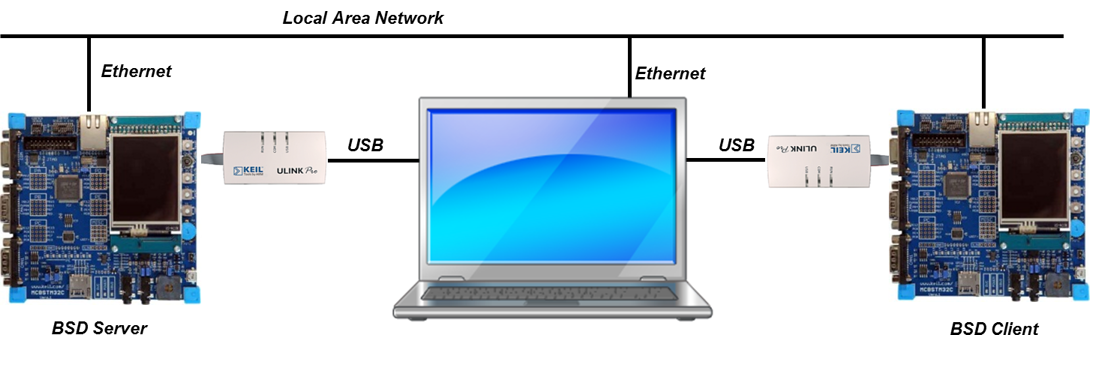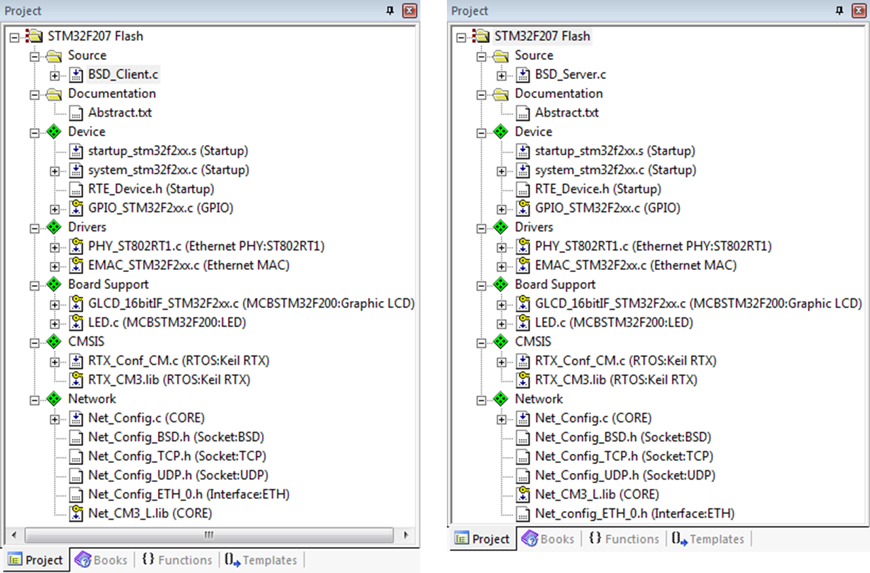 |
Network Component
Version 6.6
MDK-Professional Middleware for IP Networking
|
 |
Network Component
Version 6.6
MDK-Professional Middleware for IP Networking
|
BSD sockets are often used for network communication as they are providing a well-defined API for exchanging data over the network. In general, they are relying on TC and UDP socket communication. The BSD server and client examples are used to demonstrate BSD compliant communication. To make it work, you need to setup two development boards within the same network: a BSD server and a BSD client. An exemplary setup could look like this:

Open the two example projects in MDK (the Pack Installer's web page explains how to do this). The µVision Project window should display a similar project structure:

You may now build and download the example projects to the evaluation boards using the µVision commands:
After these steps, the projects should start executing on your evaluation kit. In case of errors, refer to the Evaluation Board User's Guide for configuration information.
The setup of the Evaluation Board hardware is described in the Abstract.txt file.